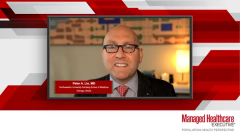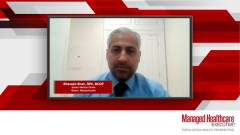
Increasing Access to Effective Therapies for Atopic Dermatitis
Current strategies used to evaluate the performance of therapies used to treat atopic dermatitis and guide formulary decisions, and recommendations to help patients receive access to effective therapies.
Episodes in this series

Bhavesh Shah, RPh, BCOP: So great question about reevaluating formulary and how formulary decisions are made. Obviously, this all depends on or is driven by the type of plan you’re actually maintaining. So if you have a Medicaid plan, then you’re essentially at the mercy of how the Medicaid plan covers that product. You can’t go and create your own formulary pathway when Medicaid has a different pathway. That’s completely driven by a PDL [preferred drug list]. And we know that’s also tied to rebates and how the competitors have positioned their rebates to Medicaid. Then, in regards to commercial options and some of the other formularies are obviously a little bit different. With commercial options there is obviously more of a PDM [proportional disease magnitude] driven formulary guidance in terms of how a product is positioned more favorably from a PDM perspective. There’s a lot that is driven there. And then, of course, there are clinical studies that go into driving the formulary, too.I think reevaluation usually happens when let’s say, a new drug comes out and we haven’t reviewed it, and we’re receiving probably 20 or 30 requests a month. I think we need to establish guidance in terms of how this could be utilized, so we can actually guide our providers and maintain or preserve our formulary status. I think that kind of drives that. If a manufacturer approaches us and says, “Hey, we wanted to see if we can have a value-based contract,” or some type of contract where they have identified that they wanted to have a more favorable preference of their product on the formulary, then of course that will also trigger the need for reevaluation and how a product is positioned in the formulary. Then, as new agents come through the market, we have them reviewed because we’re going to be getting requests. But if we’re getting 1 or 2 requests a month, it’s not going to trigger an evaluation of the formulary. Then of course, if entities like Medicaid are determining or pushing out their formulary recommendations, that will also trigger us to reevaluate our formulary. At the same time, we’re looking at what are our needs while looking at our commercial options, and our Medicare options. I think not just doing a one-sided approach where we’re just looking at that Medicaid reevaluation, but we would do it, whole class, with all of the lines of businesses.
How do you actually create access for effective treatments? It’s really through innovative contracting or, I think, the bottom line to any payer is that they’re trying to have a more favorable cost profile so that they can sustain their PMPM [per member, per month], and also treat the number of patients that they have. So it’s thinking through what is the volume of patients that this payer is going to have to treat? And can they do that while preserving the PMPM? And what kind of partnership looks like with that payer to help them through that? I think we kind of saw this as a prime example in hepatitis D, where nobody anticipated the volume of patients that you would have, and then the cost that was built into the system, it was just not sustainable for payers. Even though the most effective treatments that we’ve ever had in that disease, curable treatment, an 8 to 12-week course, and there was significant access to it because of the way it was positioned from a cost perspective. I think really working with payers in understanding what that price-setting should look like, based on the volume, so you can actually have that access for those patients.
Peter A. Lio, MD: There are groups such as the National Eczema Association, of which I’m a proud board member and scientific advisory committee member, and they do try their best to advocate for patients. They have resources available to patients. As I said, I do work with a number of companies that have programs for patients. And I’m a big proponent of them. I wish we didn’t need them. It’s one of those crummy worlds that we have to fill out paperwork to have a company help a patient. The whole thing is so silly, but that’s the reality. These programs can be amazingly effective in getting patient assistance. Not only for getting a drug that they can’t get, but also helping with copay. Some of the medicines have high copay and the companies will reimburse the patient thousands and thousands of dollars of savings, which is real money for many families, for any family. I don’t know anybody who could pay for these things out-of-pocket. And if they could, then hopefully they’re doing charitable work because then you have a lot of capital, then you can use that money for good things. So those are some of the things we can do. We can try to work together to find specialty pharmacies, a huge part of my day, as dumb as it sounds, is shopping around; This pharmacy mail order can do it a little cheaper than that one. It seems like again, healthcare utilization, there’s a shortage of dermatologists. People get so frustrated that they have to wait so long to see us. What am I doing? That’s part of what I’m doing. I’m trying to find a cheaper pharmacy for people. So these are things that I wish we could alleviate. I wish there were better techniques. Again, the payers really are in the driver’s seat. They could make everybody’s life a lot better. I wouldn’t mind it being a little stricter; Here’s our criteria, but it’s clean, simple, and universal. That’s why I think you’ll hear some doctors, not all, I don’t want to put words in anybody’s mouth, but they’ll push and I’m in the group. I would totally consider a single-payer healthcare system. I stand to lose a lot, money-wise. Presumably, I’d get paid a lot less. Why? Because of the stress and the ridiculousness and the shenanigans, it’s worth something to me. I’d be willing to pay it from my salary to have simplicity. And that’s saying something.
Transcript edited for clarity.
Newsletter
Get the latest industry news, event updates, and more from Managed healthcare Executive.


















































